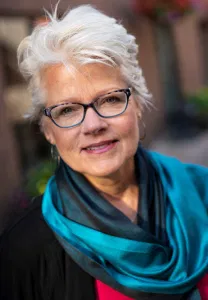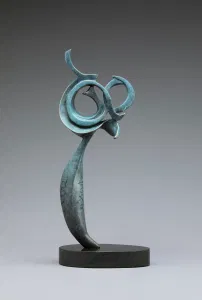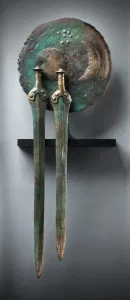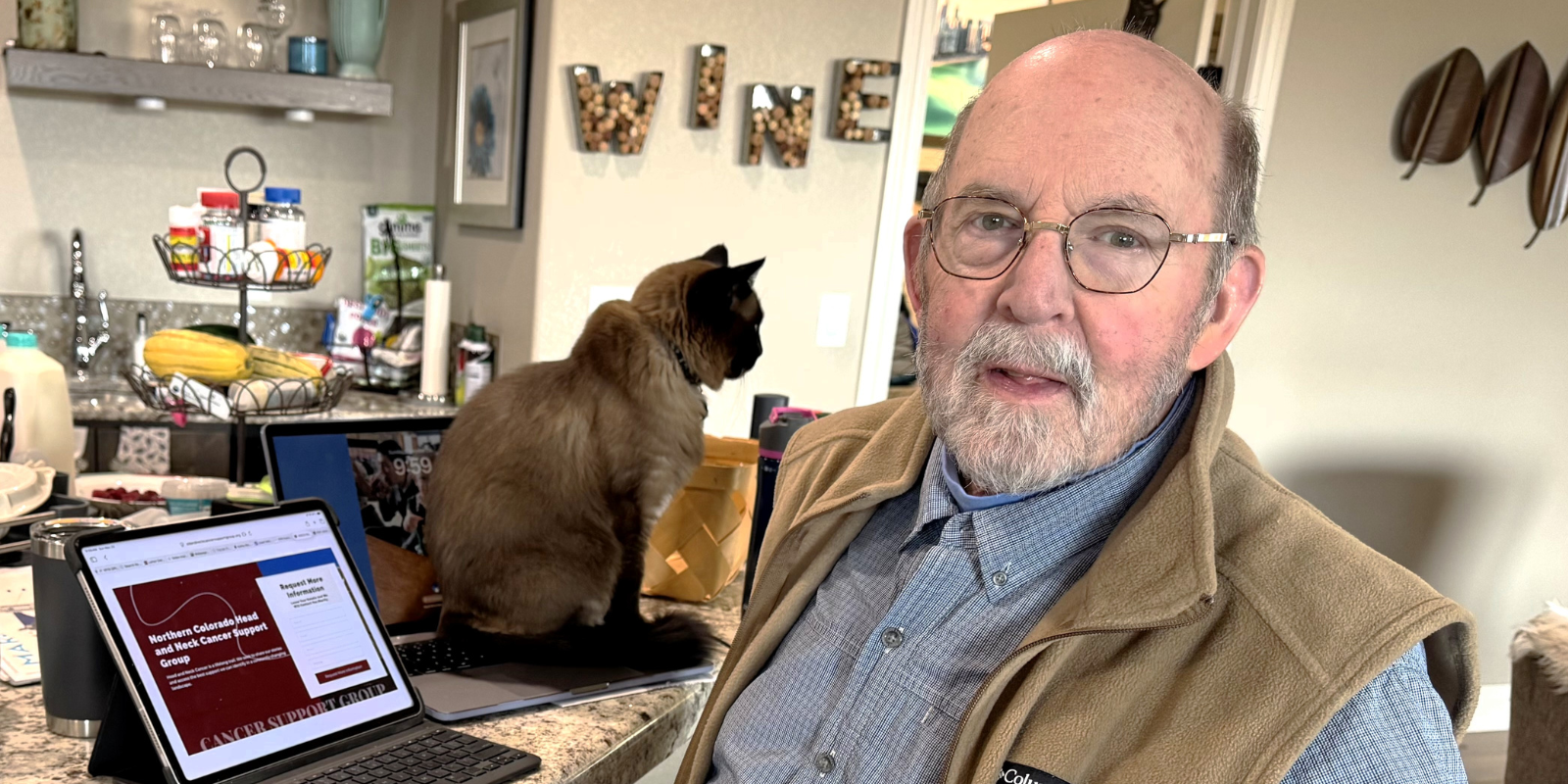“Have you ever had a dream when you wake up and everything is just kind of vibrating? It doesn’t make any sense but it kind of points the way?” asks Fort Collins artist and musician, Shelley Kerr.
In fall 2019, after living with stage IV cancer for five years, Shelley dreamt about the Seven Sisters of the Pleiades. The importance of this dream shifted her focus from the battle to the journey her cancer had led her on.
Shelley Kerr
“Doctors didn’t use the word ‘terminal,’ but I knew what they meant,” Shelley remembers when talking about first being diagnosed.
In 2014, at age 59, Shelley was diagnosed with bladder cancer and even after surgery and intensive chemotherapy at University of Minnesota, near where she was living at the time, “I still had a tumor the size of a ping pong ball, and it was bleeding,” she says.
At that point, Shelley had a 3% chance of being alive five years later.
Then her doctors found another option: The immunotherapy nivolumab (Opdivo) had recently earned FDA approval to treat melanoma and small cell lung cancer. Even though nivolumab would not be FDA approved until May 2016 for bladder cancer, Shelley’s doctors were able to talk her insurance company into letting her be one of the first patients to use the drug outside clinical trial testing.
The treatment wasn’t easy. Immunotherapy helps a patient’s immune system “see” cancer, but it can make the immune system attack healthy tissue, too, leading to side effects. In Shelley’s case, it meant inflamed joints that made movement painful. Still, seven infusions later, her cancer had stopped growing and Shelley was determined to get back to her life. And for her, life means art.
To live
“How do you represent cancer?” Shelley asks. “I went through a few iterations in my mind and thought about the Greek language – much of the medicine I used was invented in the Greek tradition.” Shelley’s nephew is an academic studying Ancient Greece and started sending Shelley words and letters. Eventually she settled on a sculpture influenced by characters of the ancient Greek word ζαω, which means “to live,” and which became the name of the piece. Around the curved base, Shelley sculpted Greek words for technology/science/ skill/physician/healer, and human/soul/spirit.
“Some people see a flower or a swan and I’m okay with that,” she says. “For me, To Live was a way to give back, not just to express my experience, but to do something for my doctors. Sometimes art comes from gratitude.”
Before moving with her husband back to Colorado, where she is from, she gave a copy of the piece to her doctors in Minnesota. Then, when her cancer started growing again in February 2018, Shelley’s Minnesota oncologist suggested she look up a former trainee of his who happened to be working at University of Colorado Cancer Center. Only, by this time, the “trainee,” Thomas Flaig, MD, had become an internationally recognized expert in the treatment of bladder cancer (and is now Vice Chancellor for Research on the Anschutz Medical Campus).
“I’m a warrior, I’m pissed off, so I decide to name my tumor,” Shelley says. “The tumor’s name is Bill. I’m Uma Thurman and I’m going to kill it. I meet Dr. Flaig and say, ‘I’d like to introduce you to Bill – we’re going to Kill Bill.’”
Shelley and Flaig hit it off immediately.
“I have to have a specialist who is running clinical trials because I’m right at that edge – I feel like I’m bodysurfing a wave of new treatments. I can’t have some generalist who says I just want to check out the journals,” Shelley says.
In a new state, with a new doctor, and with a new iteration of her cancer, Shelley felt herself drawn to new symbols in her art.
Nebra Sky Swords
Along with other treatments, Shelley and Flaig chose radiation to fight a tumor in her neck and surgery to remove 19 compromised lymph nodes.
“I’m under the machine getting radiation and they say it’s a linear accelerator and I say, ‘Well that sounds like a weapon!” Shelley says. At the time, she was working on a piece inspired by the discovery of a Bronze Age artifact found in Germany, called the Nebra Sky Disk. “Along with the disk, they found daggers and chisels and swords, and I said, ‘Oh, I want to do that!”
The idea became the piece she calls Nebra Sky Swords.
“I have had my moments of anger, shaking my fist at the sky, but the Sky Swords is a different kind of anger, an old, mature anger that is going to pick the right weapon. I’m not slashing away with the sword, I’m using photons – the rising warrior is finding the right weapon to fight a battle,” she says.
At her last radiation treatment, Shelley looked up at the accelerator to find that her technicians had taped a picture of Uma Thurman to the machine.
“I burst into tears,” she says, chuckling at herself, “a warrior who falls apart in a good way.”
To fight the remaining cancer in her lymph nodes, Flaig and Shelley decided on an innovative treatment that had just earned FDA approval in December 2019.
Breakthrough
The drug enfortumab vedotin is actually two drugs hooked together – a targeting molecule (enfortumab) that seeks out cancer cells and a chemotherapy molecule (vedotin) that is only activated once it’s been pulled inside a cancer cell. Sending chemotherapy to cancer cells, and only to cancer cells, lets patients use higher doses with fewer side effects.
“Dr. Flaig told me about this last spring and I was like, ‘Oh really, a Trojan horse!” Shelley says. “As the horse prances, it’s breaking through the platform, thus the name Breakthrough.”
Shelley started the drug in January 2020, just weeks after it was approved, and in March 2020 she got the results of scans that would show whether or not the drug was working.
“I’ve had so many scans, I don’t get very anxious anymore. But this one for sure was more important.”
Like a medicine that tastes bad, she “had a feeling this was working, because I was having low-level side effects – nausea, fatigue, hair loss, at a super low level – I completely function through it, but since I’m having side effects, I think it’s working,” Shelley says.
She was right. The scan showed a significant reduction in the size of every cancerous lymph node. Some shrank back to their precancerous size and all shrunk back from their peaks.
“It’s been a miracle walk and as I told Dr. Flaig, considering the bad luck of getting cancer, I’ve been completely lucky the whole time, riding the wave of these new therapies, staring in 2015 on the first immunotherapy and now this new drug that just got approved,” Shelley says.
The news has Shelley thinking about life beyond cancer.
Nebra’s seven sisters
“I think all the time about the language I use to describe what I’m going through,” Shelley says. “Sometimes I use battle metaphors: We fight a battle, we win or lose the battle, we have weapons. A battle metaphor means there are conflicting sides, something you’re fighting against, and there is a resolution or result, a winner and a loser,” Shelley says. “Then sometimes it’s more like a journey. When you talk about a journey, it’s also a story, but it’s not so intense or identifiable who is on what side, or the outcome.”
When she dreamt about the Seven Sisters of the Pleiades, “it was the pure heart of me as an artist going ‘that’s it,’” she says. “This last piece is more gentle. It has more female energy around it. It’s more connected to the idea of journey than battle.”
Nebra’s Seven Sisters, which she is still working on, will be the centerpiece of Shelley’s work at Loveland’s Sculpture in the Park in August 2021. It shows seven female figures based on the sisters emerging from a horizontal disc. And the fading figure of Sterope, one of the seven Pleiades, doesn’t necessarily represent death: “So many of the pieces I’ve done are about my story, my cancer. Sterope might be about cancer, but I think it shows I’m ready to tell some other people’s stories. I feel an interest, a curiosity about telling other people’s stories. I’m not too anxious about things: I know I’m just on the track. I know I’m where I need to be.” Shelley says.
As Sterope fades into a comet, Shelley sees herself fading from the center of her cancer journey.
“The biggest piece of getting good news was my husband and I looking at each other and saying, ‘Wait, we have a chance of growing old together!’ I never think about being cured. I don’t use that word. But if I can live the life I live with my cancer as a chronic condition that’s not life threatening, I’ll take it. I think I have a little arthritis in my thumb and a problem with a knee and I’m so excited because it’s like all of a sudden I’m having a normal aging process!”
Shelley is also playing more music, providing accordion and other keys for a bluegrass-inspired trio she plays in with her husband and a friend.
“Here’s the deal: I have a good attitude. I have to have a kidney removed? Fine, I have two! I have traveled, I play music with my husband, I dance,” Shelley says. “And I think cancer has made me better in all ways. It has made me a better artist. And it has taught me to take myself seriously as an artist and to know I have something to give the world. I know I’m riding on something larger than myself.”







